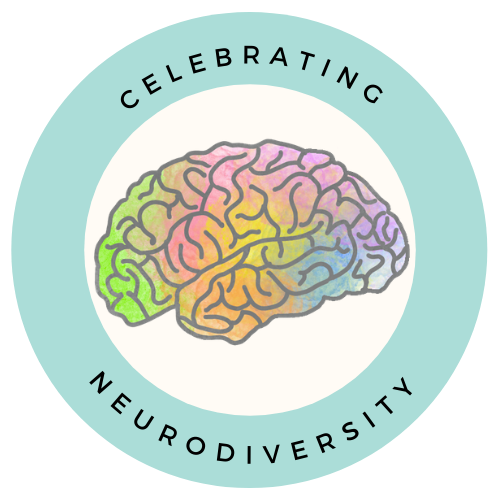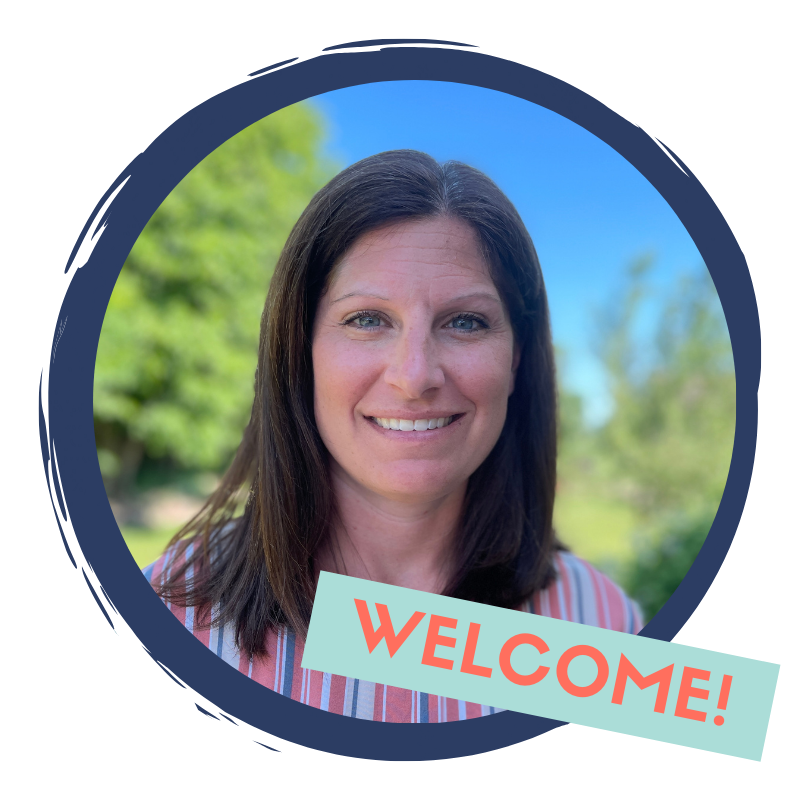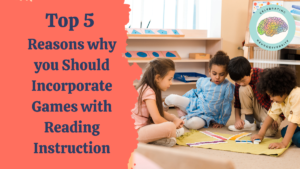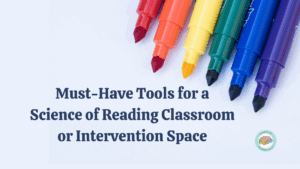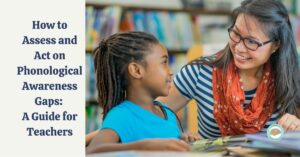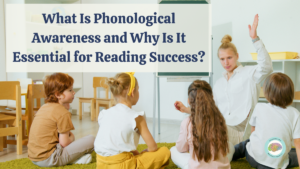Have you ever felt like you were teaching on an island? I know I have. When I first started as a special education teacher, I struggled to find a teacher community that truly understood the challenges I faced.
Regular education team meetings didn’t address my students’ needs, and when I became a reading interventionist, I was the only one in my role at my small school. I remember sitting through professional development sessions that didn’t touch on structured literacy, leaving me with more questions than answers.

I craved a teacher community—a place where educators could connect, share ideas, and support each other through the highs and lows of teaching struggling readers.
The truth is, teaching shouldn’t be a solo journey. Research shows that when educators engage in teacher collaboration, it leads to better student outcomes, increased job satisfaction, and a stronger sense of confidence in instructional decision-making. If you’ve ever felt isolated or unsure of your next steps, a teacher community might be exactly what you need.
Why Teachers Feel Alone
Teaching is supposed to be collaborative, yet so many of us feel like we’re figuring it all out on our own.
Maybe you don’t have the support you need from your administration. Maybe you’re the only teacher in your building trained in the science of reading, and you feel like no one else understands why you’re doing things differently. Or maybe you’re constantly searching for new strategies, trying to make sense of research, but don’t have a place to turn for guidance and feedback.
That isolation can be exhausting. It can lead to second-guessing yourself, frustration over student progress, and even burnout. The truth is, teachers thrive in community—and our students do, too.
The Benefits of a Teacher Community
I didn’t fully understand the power of a teacher community until I started connecting with other educators who shared my passion for helping struggling readers. It changed everything for me. Here’s why:
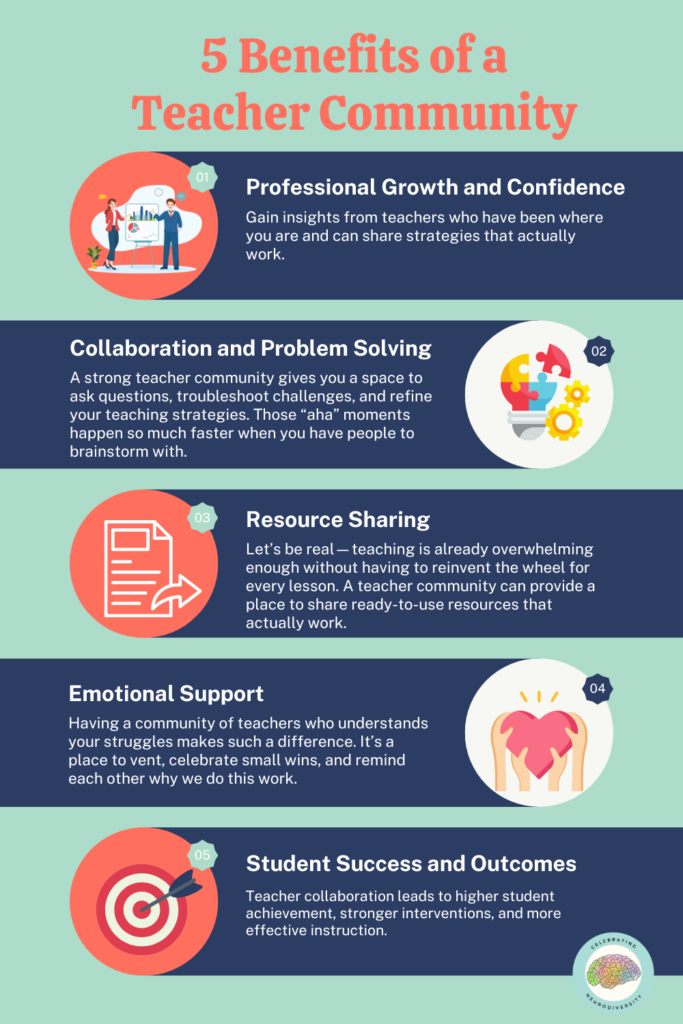
1. Professional Growth and Confidence
It’s easy to feel like you’re the only one trying to figure it all out. But when you’re part of a community of educators, you realize you’re not alone. You gain insights from teachers who have been where you are and can share strategies that actually work.
When I first started learning about phonics and structured literacy, I had so many questions. But being part of conversations with other educators helped me build confidence in my instruction. I wasn’t just implementing new strategies—I understood why they worked, and that made all the difference.
2. Collaboration and Problem-Solving
Some of the best teaching ideas don’t come from PD sessions or textbooks—they come from real conversations with other teachers. A strong teacher community gives you a space to ask questions, troubleshoot challenges, and refine your teaching strategies with people who truly get it.
I’ve had countless moments where I was struggling to figure out the best way to support a student, only to have another teacher share a simple tweak that made all the difference. Those “aha” moments happen so much faster when you have people to brainstorm with.
3. Resource Sharing
Let’s be real—teaching is already overwhelming enough without having to reinvent the wheel for every lesson. A teacher community can provide a place to share ready-to-use resources that actually work.
Instead of spending hours researching or creating materials from scratch, imagine having access to intervention activities and anchor charts that have been tested and refined by other educators. A strong community makes that possible.
4. Emotional Support and Encouragement
Teaching struggling readers is incredibly rewarding, but it can also be emotionally exhausting. It’s hard watching students struggle, especially when you know they’re capable of so much more.
I can’t tell you how many times I’ve felt frustrated, defeated, or just flat-out exhausted from trying to figure out how to help a student move forward. Having a community of teachers who understand those struggles makes such a difference. It’s a place to vent, celebrate small wins, and remind each other why we do this work.
5. Student Success and Outcomes
Research shows that when teachers collaborate, students benefit. Studies have found that teacher collaboration leads to higher student achievement, stronger interventions, and more effective instruction.
When we come together to problem-solve, share best practices, and support each other, our students are the ones who truly win!
My Dream
For years, I wished for a teacher community that truly supported the unique challenges of teaching struggling readers. A space where educators could learn together, share resources, and feel confident in their instruction.
That’s why I’m working on something special—something designed specifically for teachers who want to build confidence in structured literacy, access effective resources, and grow alongside like-minded professionals.
My vision is to create a space where:
✔️ Teachers never feel isolated in their work.
✔️ There’s a go-to place for answers, collaboration, and encouragement.
✔️ Members gain clarity, confidence, and tools to make an impact on their students.
It’s not ready yet, but I’m so excited to share more soon! If this sounds like something you’d love to be part of, I’d love to hear from you.
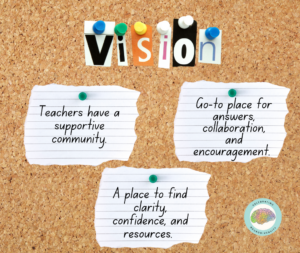
Let’s Connect!
If this resonates with you, I’d love to hear your thoughts!
💡 What do you wish you had in a teacher community? Send me an email—I’d love to chat. My e-mail is celebratingneurodiversity@gmail.com
And if you want to be the first to hear updates about what I’m working on, be sure to sign up for my email list!
If you want to read more of my blog posts- head HERE
Because no teacher should have to do this alone. ❤️
